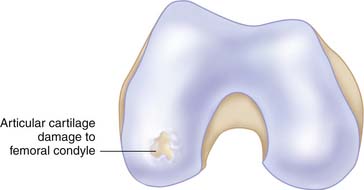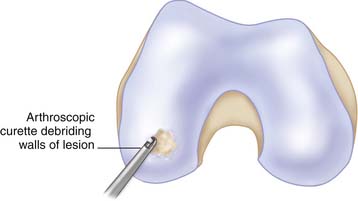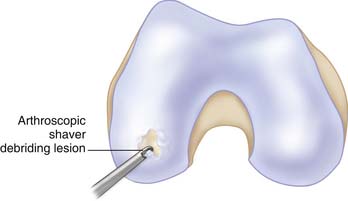Chapter 4A Bone Marrow Stimulating Techniques
Drilling, Abrasion Arthroplasty, and Microfracture
Introduction
The principle of bone marrow stimulating techniques involves the penetration of the subchondral bone plate to provide vascular access channels to the area of chondral defect. This allows for mesenchymal cells to fill the defect and provide a repair tissue fill of the articular cartilage defect. Three techniques are commonly used: abrasion arthroplasty,1 subchondral drilling,2 and microfracture.3
Steps Common to all Techniques
2. Utilizing an arthroscopic shaver or curette, debride the borders of the defect back to stable, vertical walls (Figs. 4A-2 and 4A-3).
3. Remove calcified cartilage from subchondral bone using a shaver or curette. Leave no loose flaps or debris in the lesion site. The defect is now prepared (Fig. 4A-4).
Abrasion Arthroplasty
1. Using an arthroscopic burr—either round or oval—abrade the exposed subchondral bone to produce a punctuate bleeding surface. If using a tourniquet, let it down to confirm the presence of punctuate bleeding bone (Figs. 4A-5 and 4A-6).
< div class='tao-gold-member'>
Only gold members can continue reading. Log In or Register to continue
Stay updated, free articles. Join our Telegram channel

Full access? Get Clinical Tree












